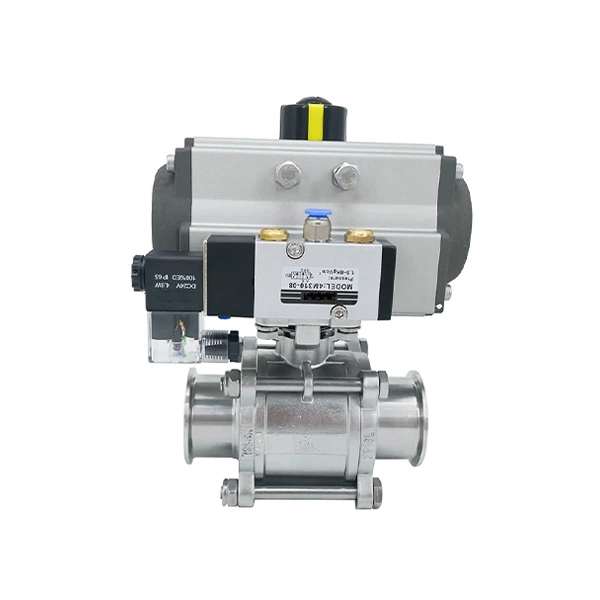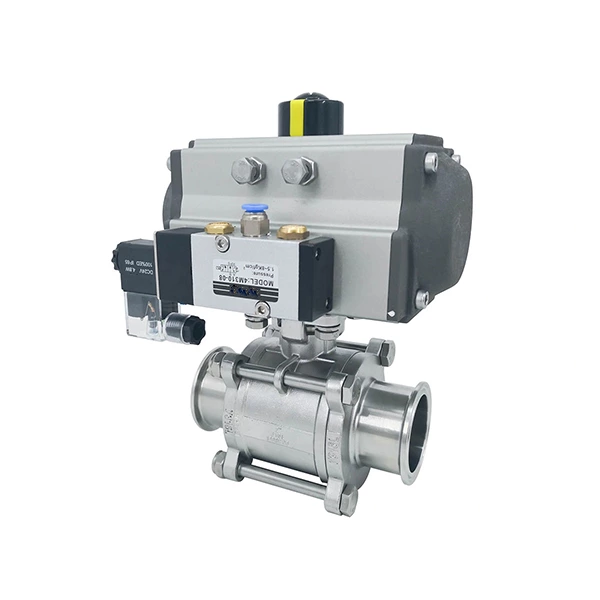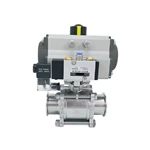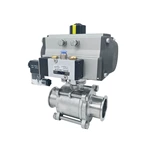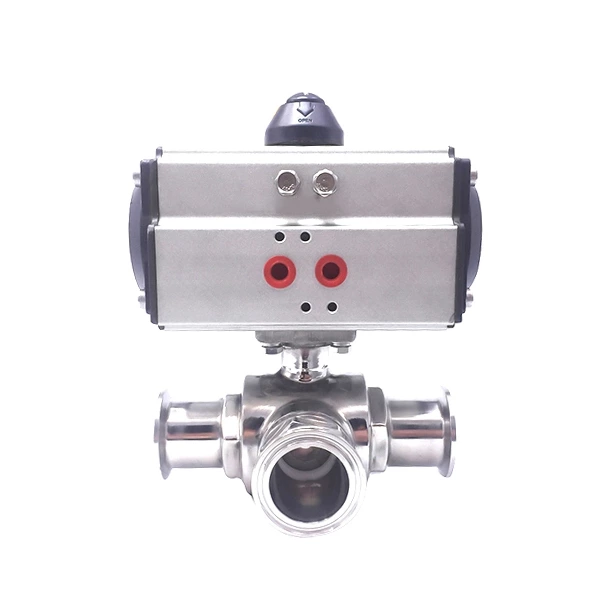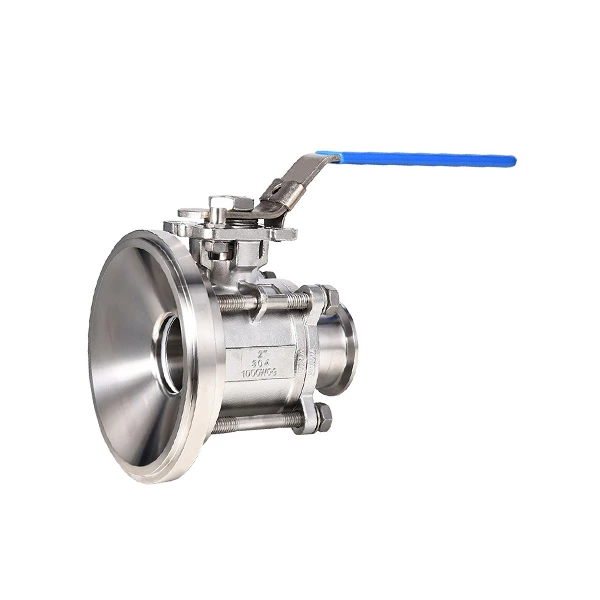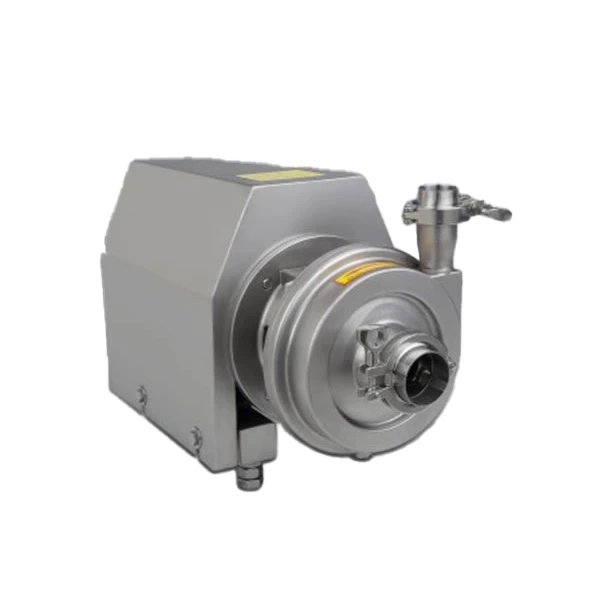- Sanitary Pumps
-
Sanitary Valves
- Sanitary Butterfly Valve
- Sanitary Ball Valve
- Sanitary Check Valve
- Sanitary Diverter Valve
- Sanitary Diaphragm Valve
- Sanitary Sampling Valve
- Angle Seat Valve
- Sanitary Safety Valve
- Sanitary Constant Pressure Valve/Back Pressure Valve
- Sanitary Plug Valve
- Sanitary CPM Valve
- Sanitary Level Gauge
- Sanitary Tank Bottom Valve
- Sanitary Accessories
- Sanitary Tank Accessories
- Stainless Steel Pipe Fittings
- Industrial Valves
- Stainless Steel Tank
- Food Grade Sealing Ring
Sanitary Stainless Steel Pneumatic 3Pcs Ball Valve
- Place of Origin::
- Wenzhou, China
- Packing::
- Suitable Packing for Sea/Air Transport
- Quantity::
- 100000 PCS Per Year
- Payment::
- T/T, L/C, Western Union
- Medium::
- Water, Oil
- Material::
- SS304/SS316L
- Connection::
- Welding
- Specification::
- 1/2"-4"
- Pressure::
- 0-10Bar
- Temperature::
- -20°~120°
- Gasket::
- PTFE
Working principle of sanitary ball valve
A precisely manufactured ball with a through cavity is placed between two flanges and two PTFE valve seats in the valve body. A valve spindle acts on the ball by 90° rotation, thus opening or closing the valve.
At the same time, a valve seat cleaning joint can be added to clean the ball valve cavity and discharge it through the drain hole.
The sanitary ball valve is operated by a pneumatic head or manually by a handle.
The series of sanitary ball valves have three structures:
The sanitary ball valve is a three-piece structure, consisting of two flanges, a valve body and two PTFE valve seats. It is installed with bolts. A valve seat cleaning joint can be added to clean the ball valve cavity and discharge it through the drain hole.
The sanitary ball valve is a three-way ball valve with two structural forms: T-type and L-type. It consists of a valve body, a valve cover and a PTFE valve seat, and is installed by thread.
The sanitary ball valve is a two-piece structure, consisting of a valve body, a joint and two PTFE valve seats, and is installed by clamping. A valve seat cleaning joint can be added to clean the ball valve cavity and discharge it through the drain hole.
Sanitary ball valve technical parameters
| Metal material | Parts in contact with the product | 304L/316L(1.4307/1.4404) Forged |
| Parts not in contact with the product | 304(1.4301) | |
| Sealing material | Standard | EPDM/PTFE |
| Optional | FPM/PTFE,HNBR/PTFE,Silicone/PTFE | |
| temperature | Continuous operating temperature | -20~+135℃(EPDM) |
| Sterilization temperature | 150℃(max 20min) | |
| pressure | Work Pressure | 0~5bar(standard) |
| Control gas source pressure | 5~8bar | |
| Surface treatment | Internal surface treatment | Ra≤0.8μm |
| External surface treatment | Matt | |
| connect | Connection Standards | Welding end: DIN 11850 Series 2 |
| Welding end: Inch pipe diameter standard | ||
| Connection method: welding, quick-release, thread and other common connection methods | ||
